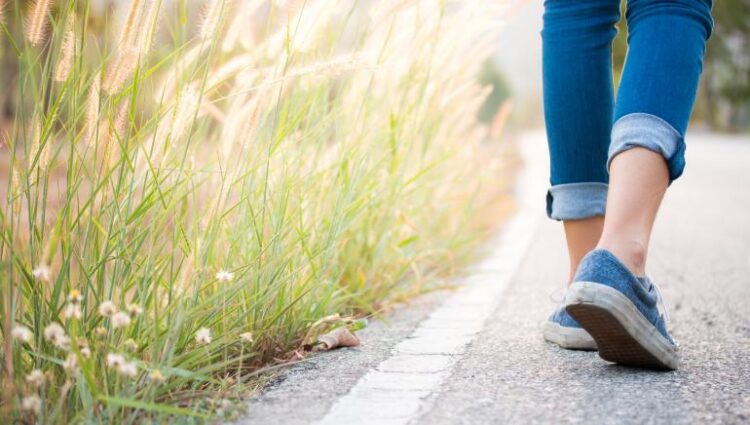Studies have shown that backward walking, also known as retro walking, is not only beneficial for one’s physical health but also for mental health.
According to the Ultrarunning History website, people have been walking backwards as far back as the 10th Century, mostly for fun but often as a result of impulsive bets. As was the case for Patrick Harmon a fifty-year-old cigar-shop owner in the United States, in 1915 – who embarked on his adventure of retro walking from San Francisco to New York over a bet worth $20,000. According to the website, Harmon with the help of a friend and a small car mirror attached to his chest to help him see where he was going, covered a distance of 3,900 miles (approximately 6,300 km) in 290 days. At the end of the journey, Harmon claimed his ankles had become so strong a sledgehammer would be required to “sprain them”.
Karachi Kings Player Categories for the 9th edition of HBL PSL announced
Iceland declares ‘Emergency’ over Fears of Volcanic Eruption
A claim which seems to be linked to research on the subject, according to which, walking backwards is often used in physiotherapy to relieve back pain, knee problems, and even arthritis. According to other studies, walking backwards can also positively affect one’s cognitive abilities such as memory, reaction time and problem-solving skills, respectively. Although doing so for health purposes reportedly originated from ancient China, researchers in the US and Europe are more inclined to use it as a means to improve sports performance and build muscle strength in athletes.
One such expert in biomechanics, Janet Dufek of the University of Nevada in the US, has been studying the mechanics of walking for over 20 years. According to Dufek and her colleagues, walking backwards for ten to fifteen minutes a day over the course of a four-week period can help to increase hamstring flexibility in ten healthy female students. Additionally, it can help to strengthen back muscles responsible for stability in the spine and flexibility. In another study, Dufek focused on a cohort of five athletes who self-reported a reduction in lower back pain after periods of backwards walking.
Repatriation of illegal foreign nationals continuing

According to Dufek: “research has shown that, indirectly, backward walking has some benefits relative to lower back pain simply because you’re stretching the hamstrings”.
As far as sports training is concerned, many athletes engage in backwards walking or even running drills as it puts less strain on the knee joints simultaneously building strength and helping to protect against injury. Aside from helping athletes, retro walking also helps those who suffer from osteoarthritis or post-stroke patients who have walking impairments. They also allow people of all age groups and body types to burn more calories in comparison to standard, forward walking.
Returned Refugees From Pakistan Say They Were Deprived of Schooling
Air India To Receive New Aircraft Every 6 Days In Next 18 Months
Indicating the difference in the biomechanics of walking forwards or backwards as the factor that helps to bring these physical benefits, Dufek says: “In backward walking, there is a reduced range of motion at the knee that can have some benefits for individuals who may be rehabilitating from [a] knee injury, for example”. This stance is supported by a recent study which shows that the range of hip and knee joints is reduced in retro-walking. Although standard locomotion starts with heel contact in the case of backwards walking, toe contact is necessary. As a result, there is less impact on the knee joint while using different muscles. This is because the ankle joint absorbs the most shock during retro-walking.
Zee-Sony India Merger Talks Stall Over Disagreement On Leadership
Rare Red Aurora Spotted In Ladakh Skies As Geomagnetic Storm Hits Earth

On the other hand, researchers have discovered that walking backwards also has a difference in neural activity. In this case, the perfrontal cortex which is responsible for cognitive skills like decision-making and problem-solving respectively, is especially active when stepping backwards. Likewise, a Dutch study testing thirty-eight participants’ ability to solve a Stroop test found that those who regularly practised backwards walking had the fastest reaction times in comparison to those who didn’t. This may be attributed to their brain function as being already used to performing “incongruous” tasks. Another study furthered the stance by showing that even watching a video of a train going backwards, or imagining moving backwards helps to improve the ability to recall information.
Shoaib Akhtar terms Today’s cricket as ‘FRAUD’
ICC suspends Sri Lanka Cricket Board
India, US To Co-Produce Infantry Combat Vehicles: US Defence Secretary
Player Categories for the 9th edition of HBL PSL announced
Stay tuned to Baaghi TV for more. Download our app for the latest news, updates & interesting content!






